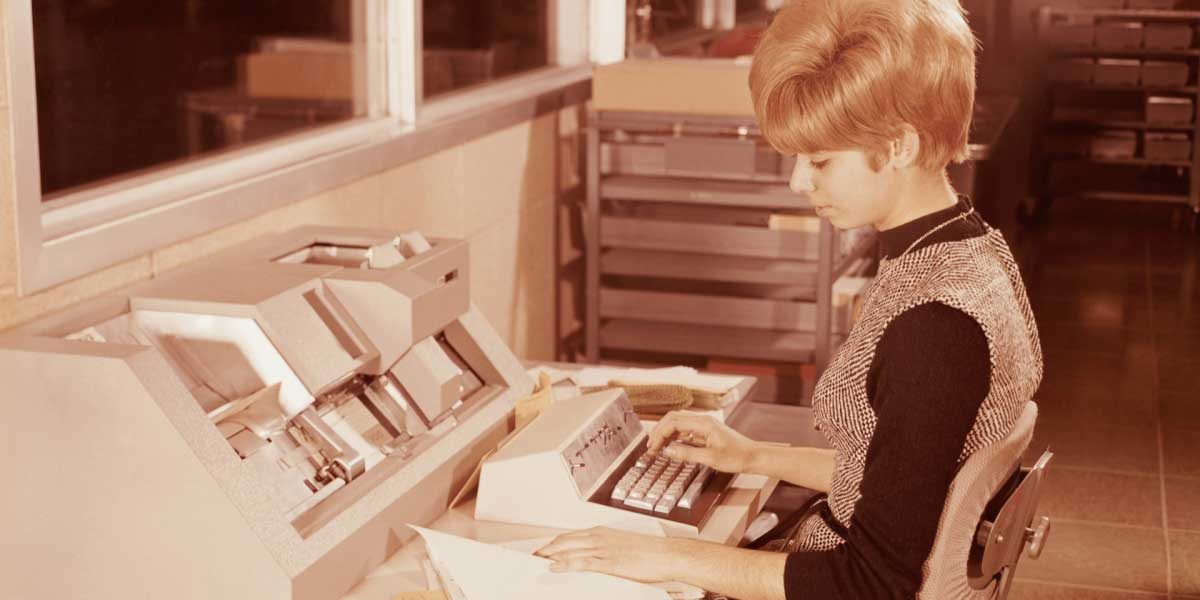The rhythmic clackety-clack of typewriters was once the soundtrack of the office. These ingenious machines revolutionized communication, allowing for the creation of crisp, permanent documents. But as technology marched forward, the trusty typewriter found itself relegated to a place of nostalgia. So, when exactly did computers dethrone typewriters as the kings of the office?
A Slow Fade Out: The Rise of the Personal Computer
The dethroning wasn’t a swift, dramatic coup. It was a slow waltz, a gradual decline that stretched over a couple of decades. As PC Magazine points out, the personal computer (PC) began its rise in the late 1970s and early 1980s. These early machines were like awkward teenagers at a dance – bulky, expensive, and unsure of themselves. But beneath their clunky exteriors, they held a tantalizing glimpse of the future: a world where edits could be made electronically, and documents could be stored and retrieved with the ease of flipping through a digital rolodex.
Initially, the PC existed alongside the typewriter, not as an immediate replacement. Businesses saw the value of the PC for specific tasks, like data analysis and basic word processing. Imagine a secretary adept at shorthand, still taking dictation for important letters, while a new intern hunched over a PC crunching numbers in a rudimentary spreadsheet program. However, the high cost and complexity of early computers meant that typewriters remained the undisputed champions for everyday tasks like creating letters and reports. They were the reliable workhorses of the office, the familiar tools that generations of secretaries and office workers had mastered.
The typewriter, with its satisfyingly clunky keys and the crisp permanence of its printed letters, offered a sense of control and finality that early PCs simply couldn’t match. Imagine a world where every typo meant starting over, where revisions were messy white-out battles on the page. The early days of the PC were plagued by their own challenges – cryptic operating systems, limited storage capacity, and the constant threat of a floppy disk malfunction wiping out hours of work. In this context, the typewriter’s simplicity and reliability held a certain appeal.
This uneasy coexistence continued for a while. The typewriter remained king, but the PC, with its promise of a paperless future, was a persistent challenger, quietly gaining ground in the background. It was a slow dance, a gradual shift in power that would eventually lead to a complete transformation of the office landscape.
The Word Processing Revolution: Editing Without Wite-Out
The tide began to turn in the favor of the PC with the advent of user-friendly word processing software. Programs like WordStar and Microsoft Word offered a revolutionary new way to create and edit documents. Gone were the days of painstakingly retyping pages with every correction. With word processing software, edits could be made electronically, saving time and frustration.
This newfound ease of use, coupled with the decreasing cost of PCs, started to make them a more attractive option for businesses. As the 1980s progressed, and software continued to improve, the PC’s functionality expanded. It wasn’t just about word processing anymore; spreadsheets, databases, and even rudimentary graphics programs became available. The PC was transforming into an all-in-one office powerhouse.
The Final Click: The Legacy of the Typewriter
By the late 1980s and early 1990s, the writing was on the wall (pun intended) for the typewriter. PCs had become affordable, user-friendly, and offered a level of functionality that typewriters simply couldn’t match. Offices began phasing out their old machines, replacing them with the whirring hum of personal computers.
However, the typewriter’s legacy lives on. These machines were more than just tools; they were symbols of an era. The distinctive clack-clack of the keys, the satisfying weight of a finished page, and the permanence of the printed word – these are all elements that hold a certain nostalgic charm. Today, typewriters are more likely to be found in antique shops or museums, a reminder of a time when the clickety-clack ruled the office.
The typewriter’s reign might be over, but its impact on the working world is undeniable. It paved the way for the digital revolution, and its core function – the creation of written documents – remains essential in today’s computerized offices. So, the next time you boot up your computer and effortlessly edit a document, remember the trusty typewriter that came before, a machine that clacked its way into history.

















